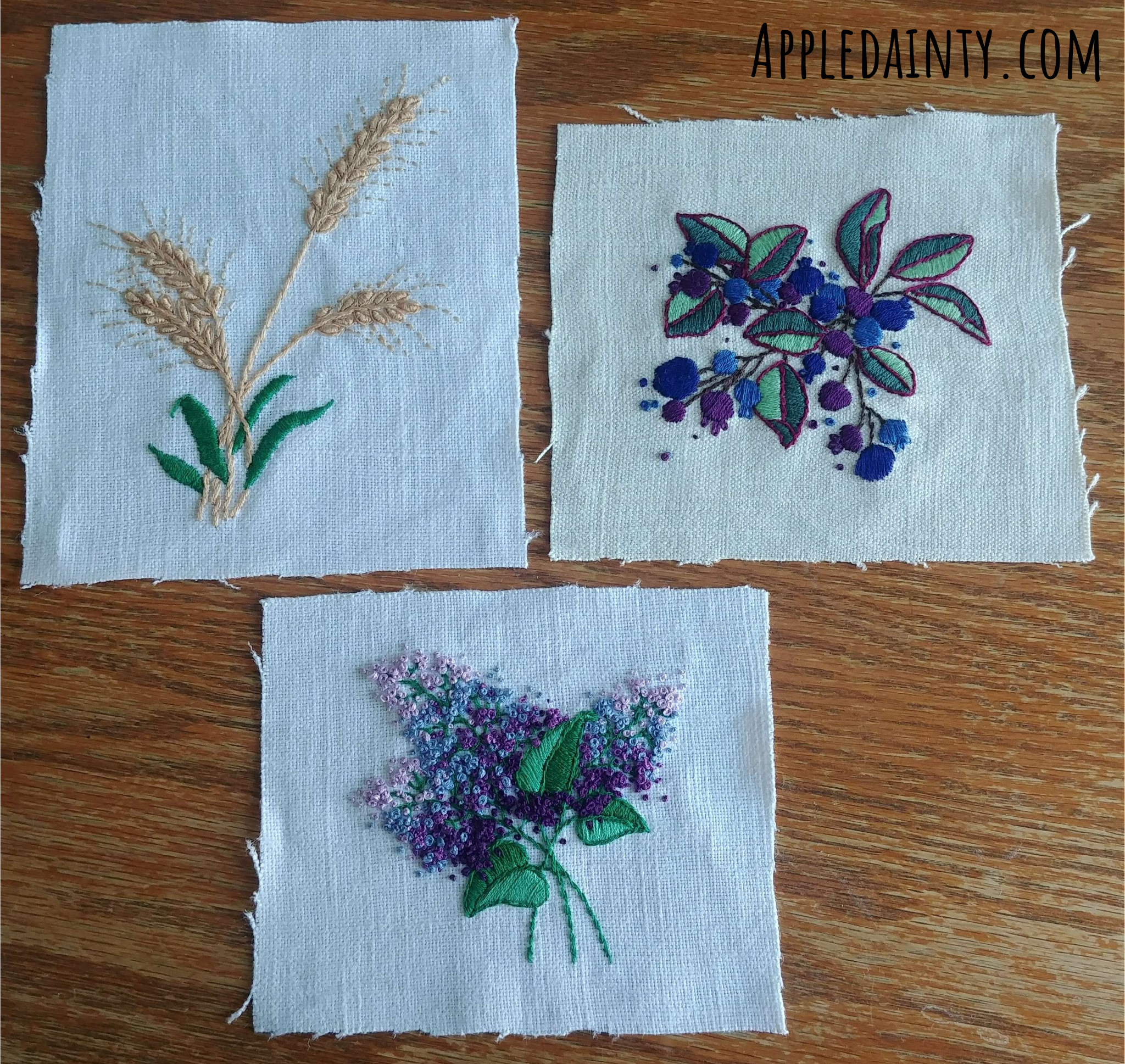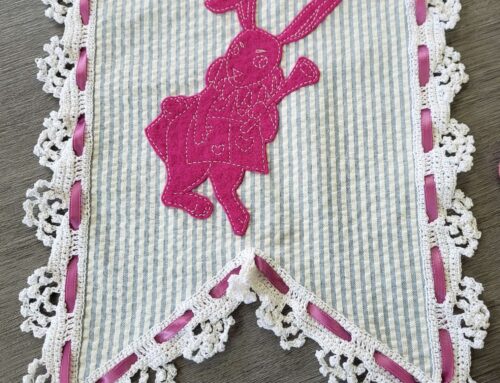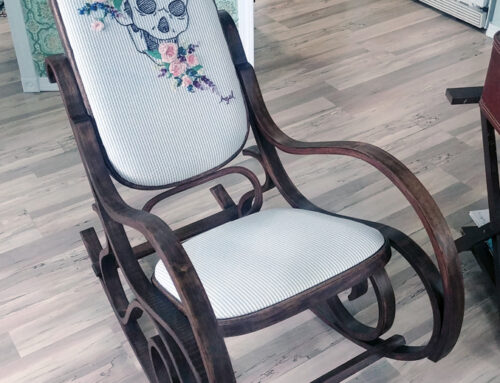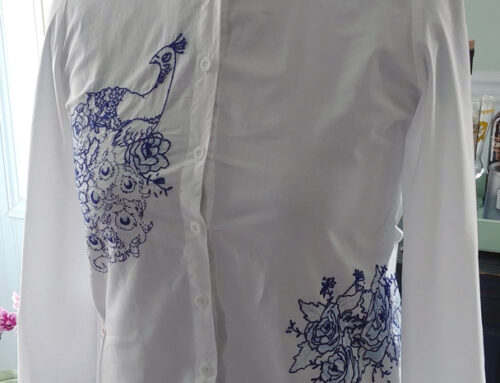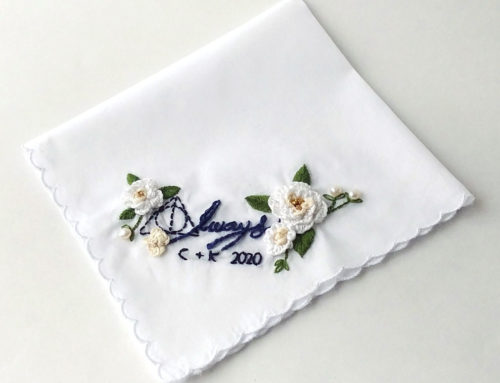Winter is always a bit rough here in Western Canada. It’s long, often bitter cold, and while it’s more sunny here than in other parts of Canada we have our fair share of gray winter days – where it seems like everything from the sky to the ground, your whole field of view, is nothing but gray.
But, sometimes I like to remind myself that Saskatchewan is a beautiful place. I was watching the recent season of Next in Fashion the other day, and was fascinated with the work of designer Nigel Xavier. I loved that he worked with a lot thrift store finds – and felt that his unconventional use of crocheted afghans, old quilts, and tapestry fabric was truly next in fashion. It felt like a revelation to see someone so young taking Grandma’s old hobby crafts and turn them into streetwear. I have always been a big fan of contrasts, and have spent most of my life doing what I joke are “old lady hobbies” – crochet, embroidery, baking, and so on.
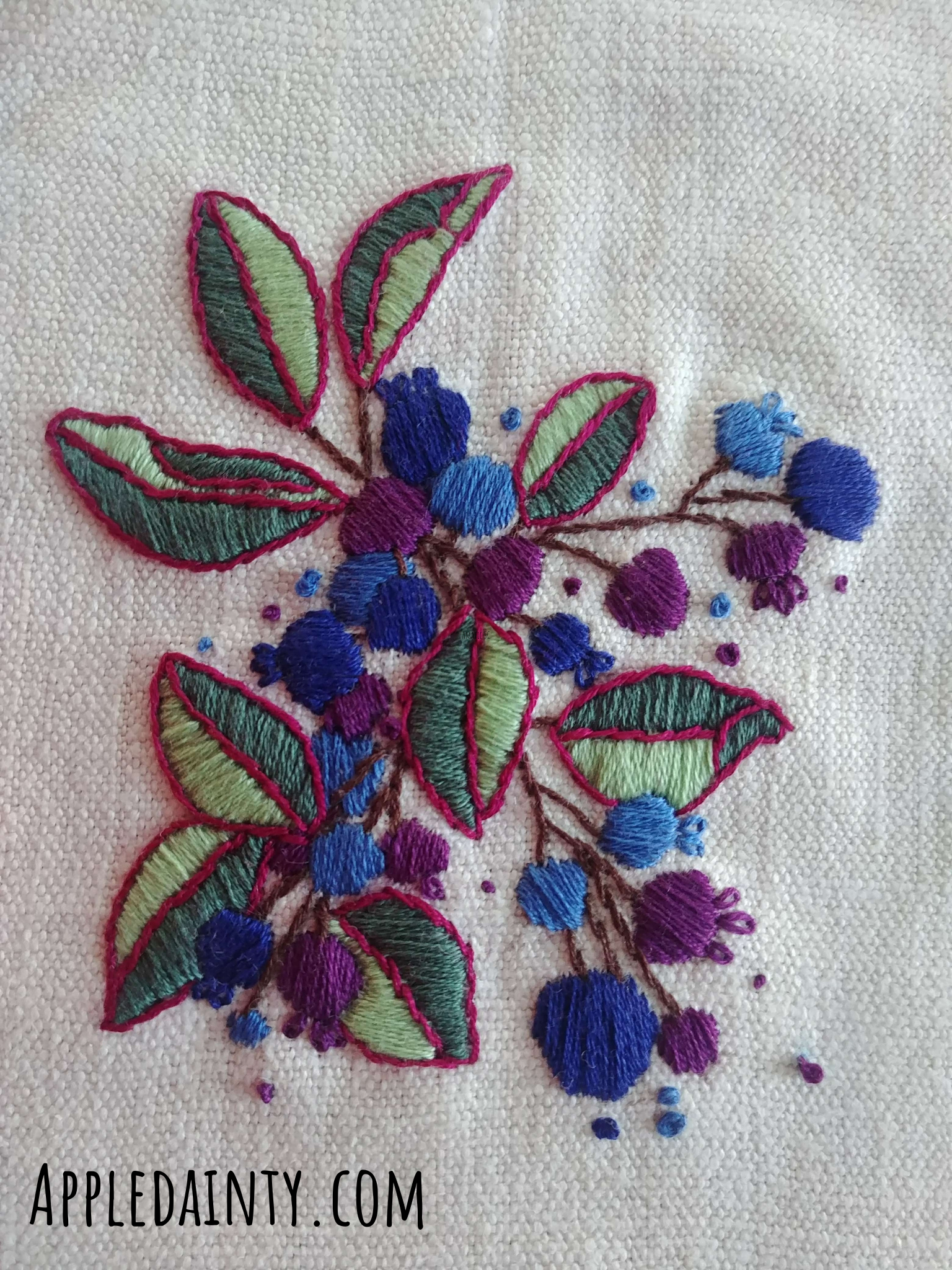
It tickled me to see the softness, comfort and warmth of these old handmade objects being embraced by a part of our culture where the opposite had long been held as the standard – being hard, wearing only the newest mass manufactured fashion brands, sometimes with tags and stickers still on display so everyone would know you had new, legit thing.
It also reminded me that I have been collecting vintage and antique linen for some time, always intending to use it for some kind of embroidery project. After seeing Nigel’s success, I decided I should really start using that fabric – and that maybe if I make enough of these embroidered pieces, I can use them along with some other fabric scraps to create patchwork panels. What am I going to make with the panels? No clue yet. But, I figure by the time I have enough of them done, an idea will come to me.
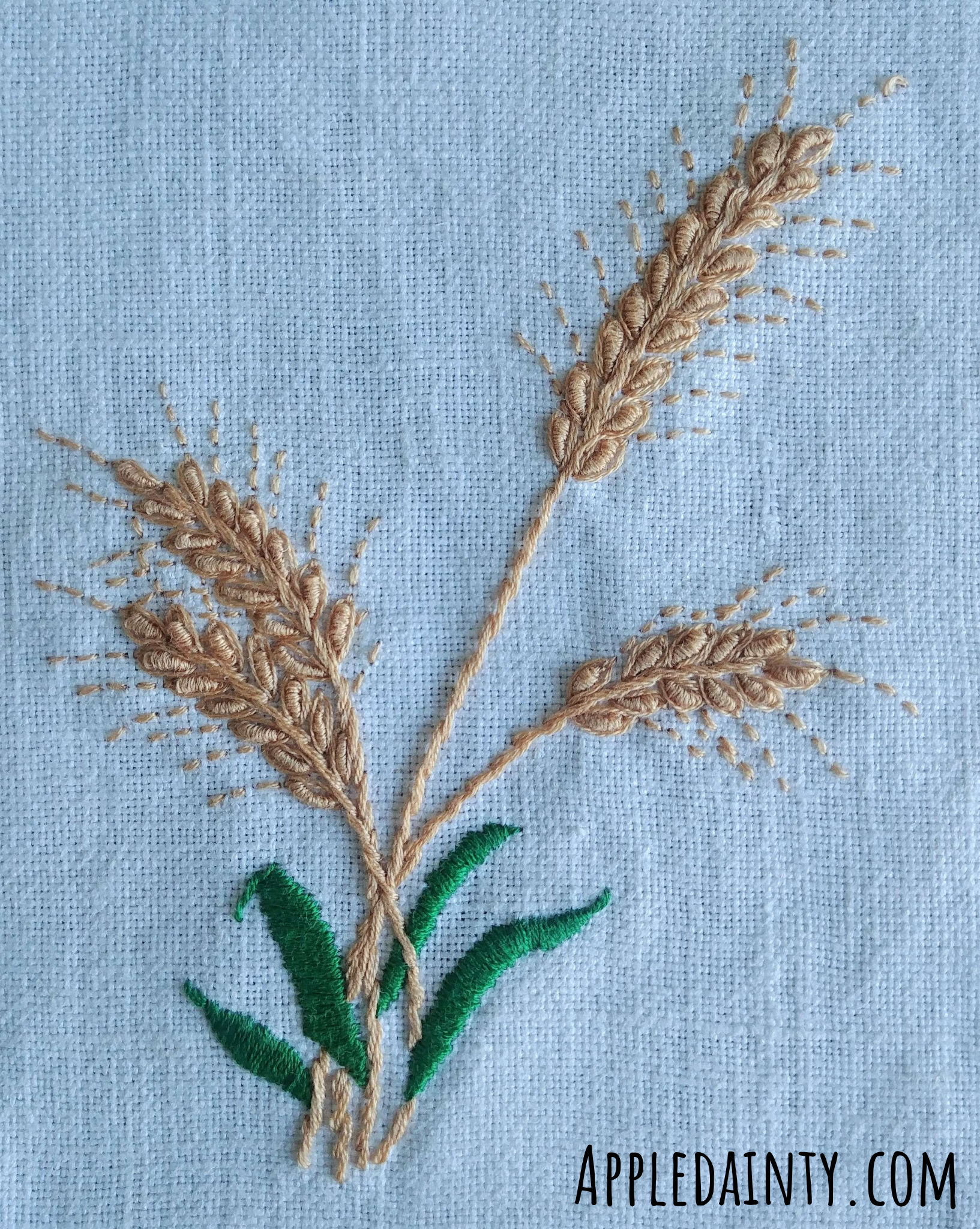
Because this winter has been especially hard, I’ve been aching for spring to come – and felt drawn to the idea of making my first set of patches based on various plants that I’ve seen here in my adopted home of Saskatchewan.
The first patch that I made was inspired by my husband. Saskatoon berries are his favorite fruit, and I try to bake with them as often as I can. I figured I might as well use them in something other than baked goods. The berries are very similar to blueberries, but have a slightly different flavor. I choose to outline the leaves in magenta just for a bit of spice.
Next, I worked on a patch featuring wheat – probably the most popular and enduring symbol of the province. I knew that if I was going to do a series on the flora of Saskatchewan that wheat would have to be included. I looked at a few examples of wheat embroidery, and feel like I managed to do it justice.
You can find wheat pretty much everywhere around here – you can buy raw wheat to grind your own flour, find it on clothing and the provincial flag, and see it even in the designs used on sewer grates in downtown Saskatoon. I always thought that wheat would be taller for some reason; like corn – and was surprised that it was not so tall as I originally thought. But, a lot of my friends didn’t know that pineapples grow from the ground on low bush-like stalks – they assumed pineapples grew on trees. You live and learn, eh?
I debated a little bit about which plant I wanted to do for my last flora piece, but finally decided on lilacs. The provincial flower is actually the prairie lily, but I’ve rarely seen them – lilacs, however, I get excited for every year and they grow pretty prolifically around here. I also felt like the lilac worked better with the colors I had in mind for the set of fauna patches I want to work on now that these are done. If I end up deciding to do a fourth patch, I will definitely do a prairie lily, but I feel very satisfied with how this lilac patch turned out.
While I don’t have any qualms with the use of embroidery patterns, I don’t generally use them. For this project, like with my previous embroidery work, I drew the design myself.
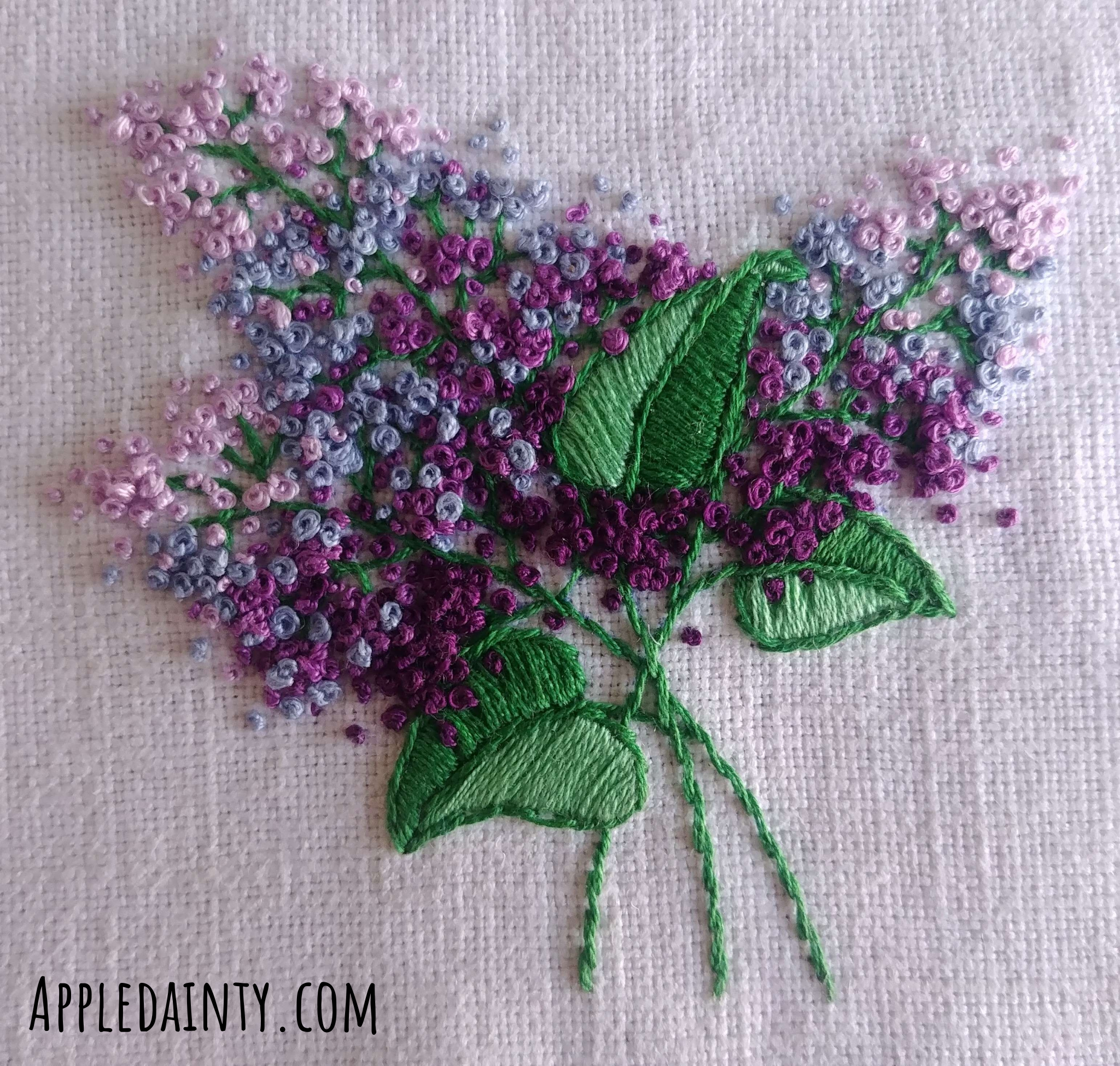
I’ve used water soluble stabilizer in the past, but this time I used a heat-dissolvable pen to draw out my designs, then embroidered directly over the lines before ironing away any of the visible pen that didn’t get covered by stitching. The pens worked a treat, leaving nothing behind but the stitch work. I’m definitely going to be using this method a lot going forward – although I know it’s not suitable for everything.
Anyhoo, that is all I’ve got for today. I have a lot more in store on this year’s project list, and I hope you check back again soon for some crafty goodness!
